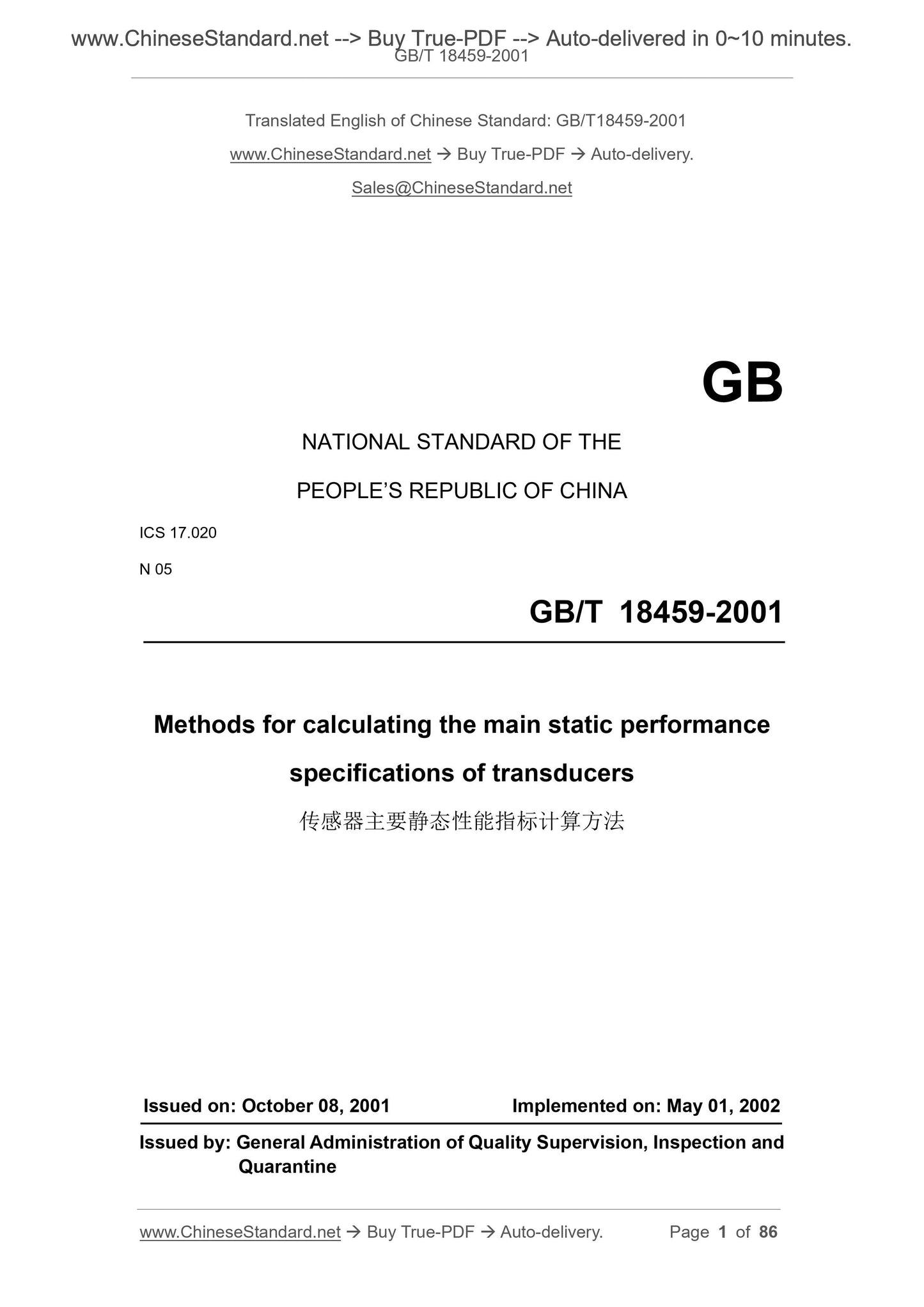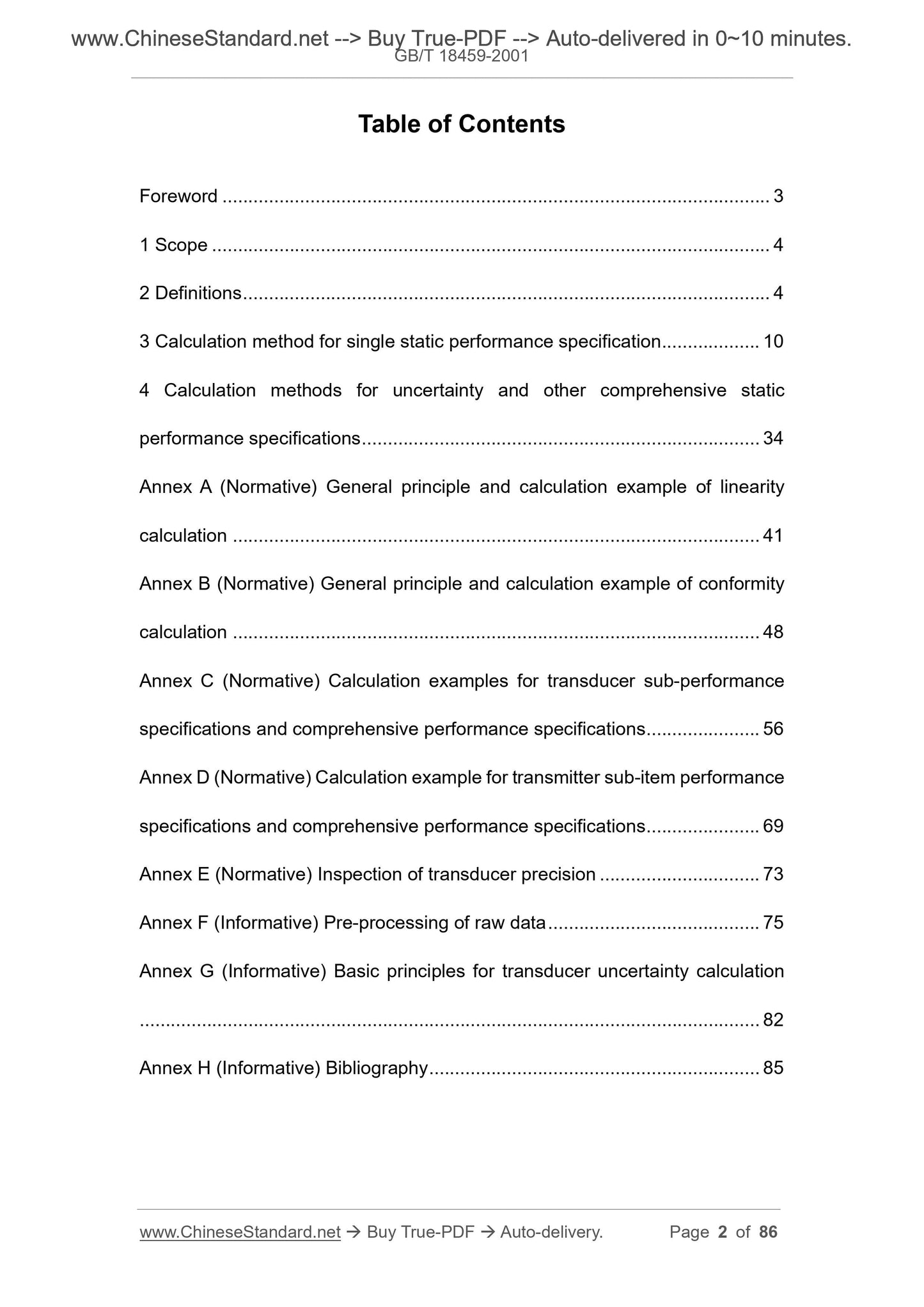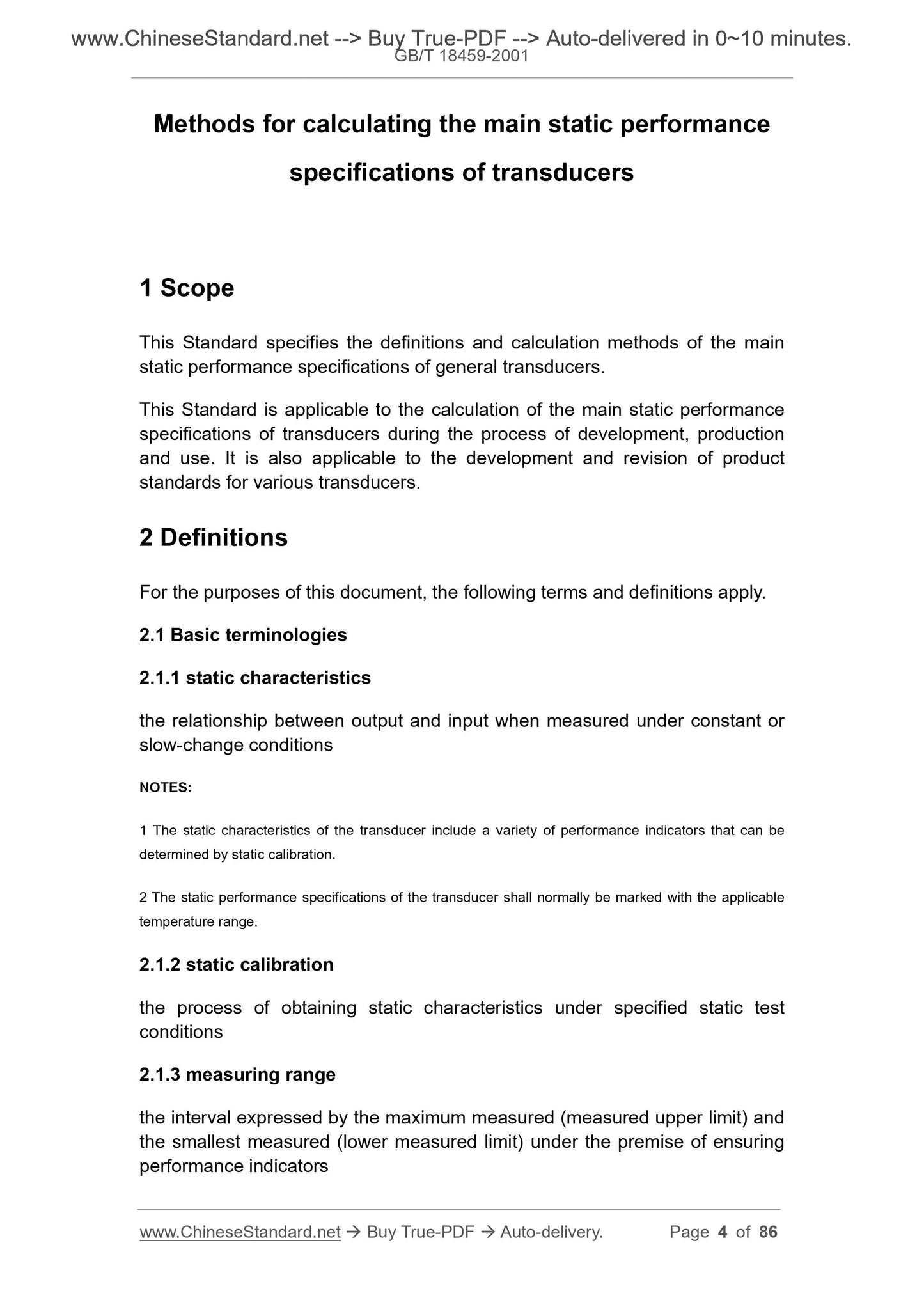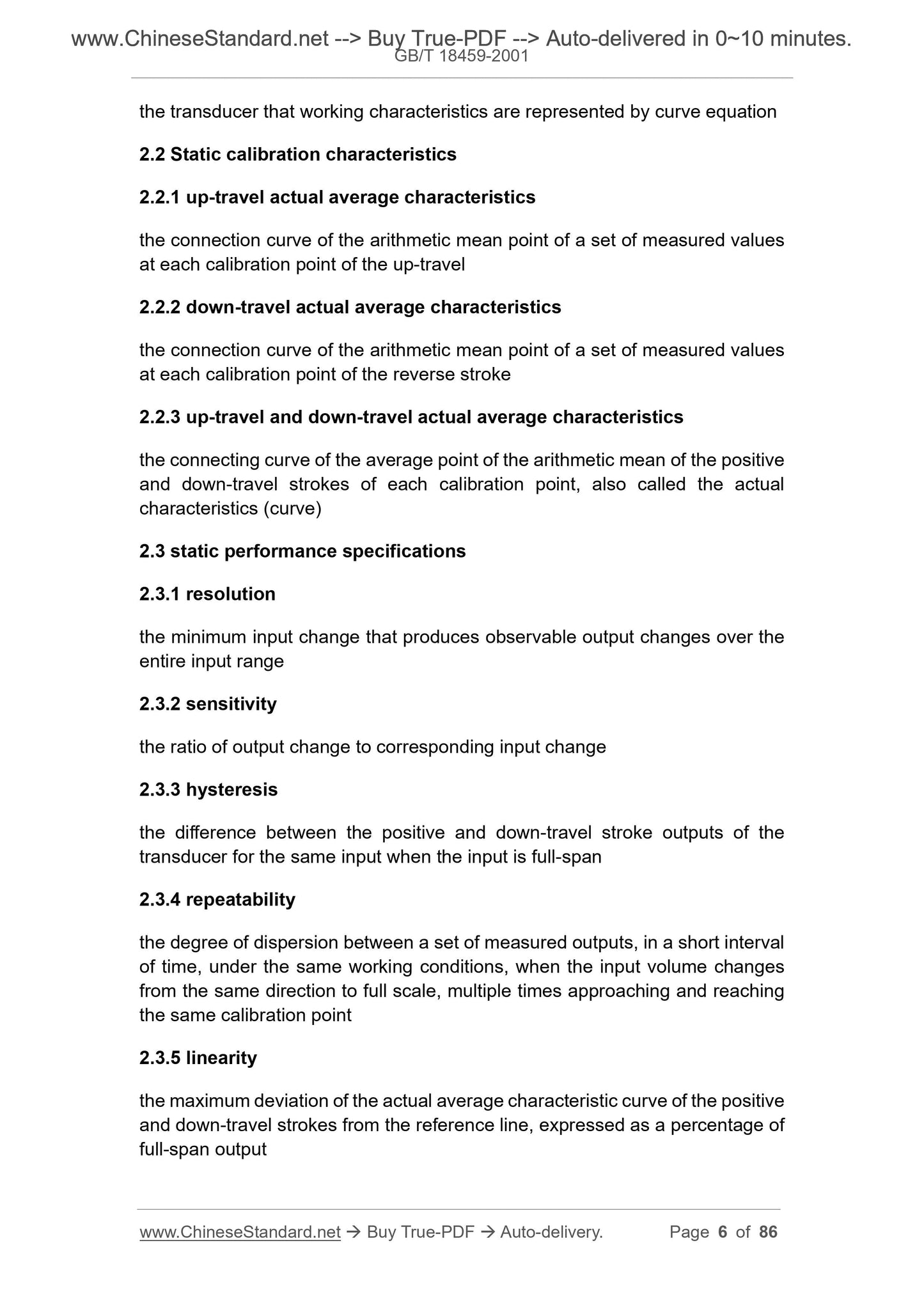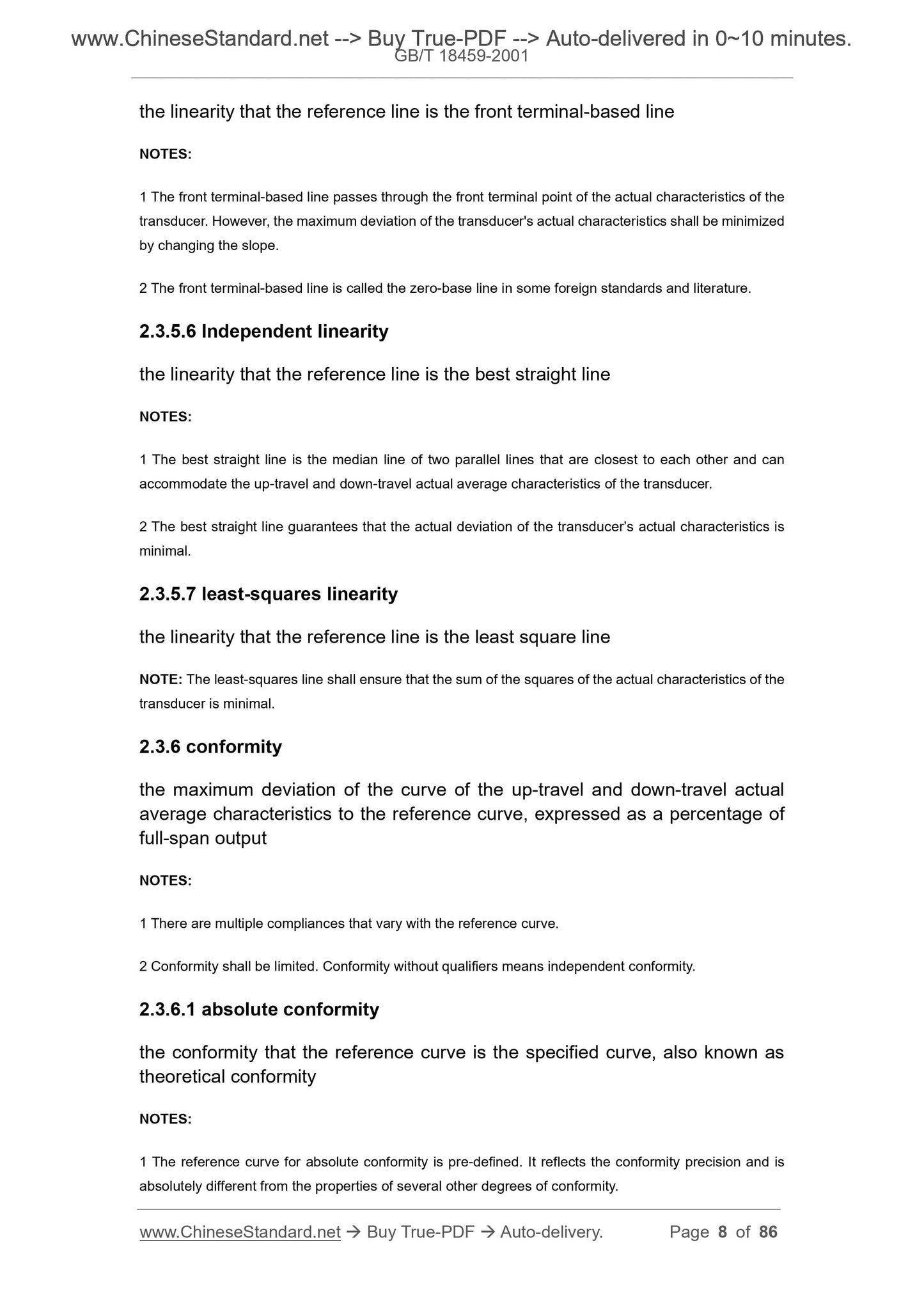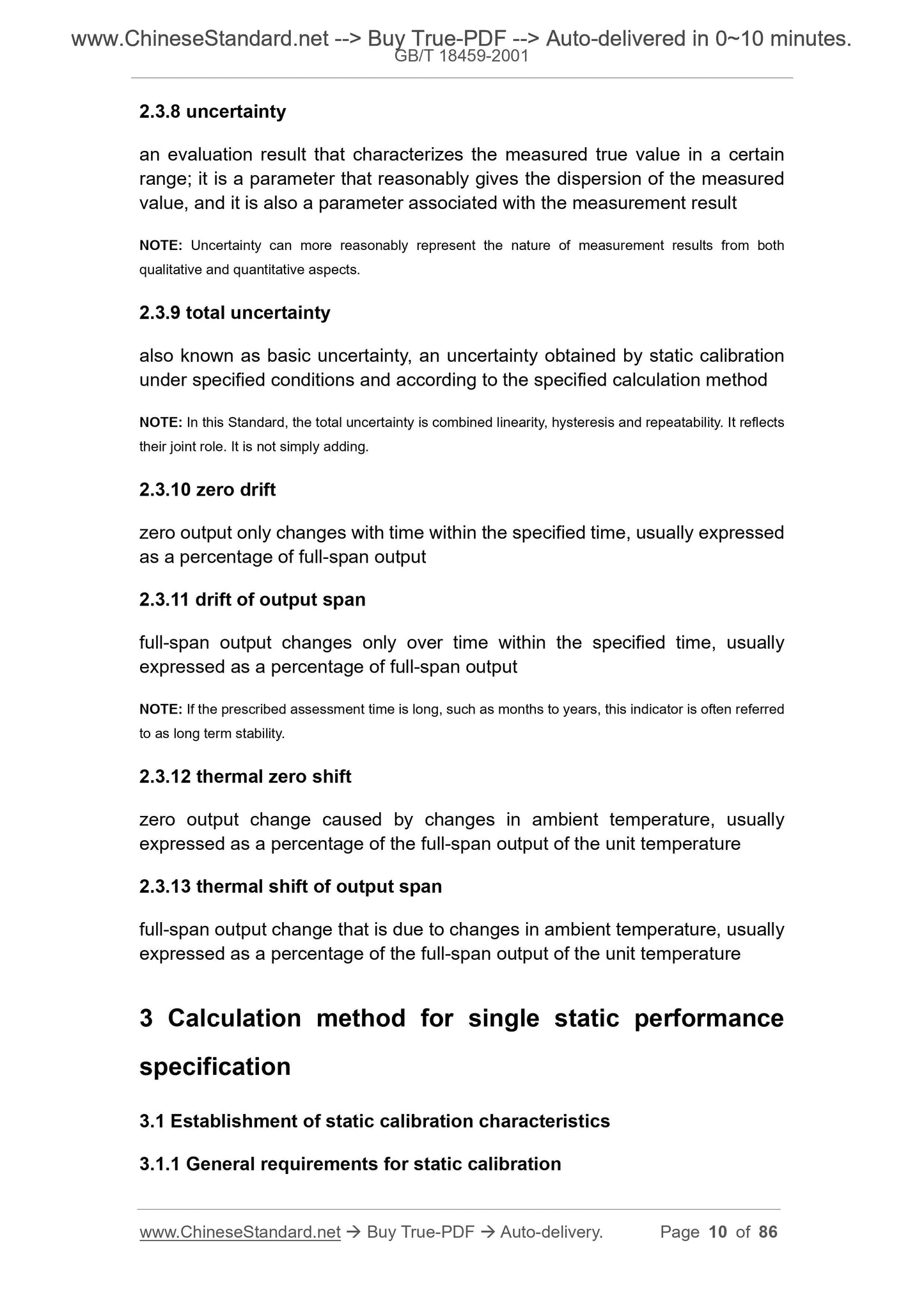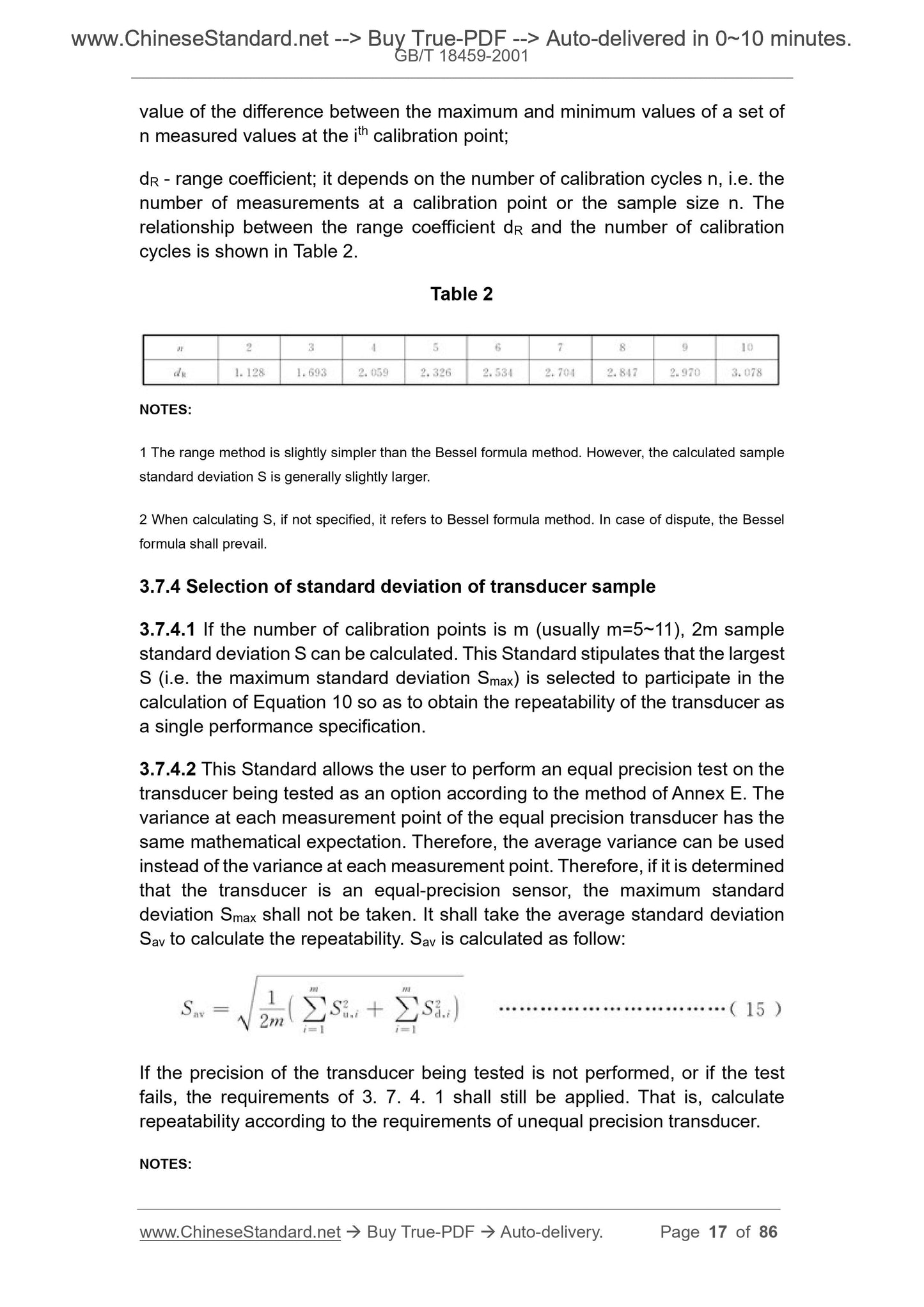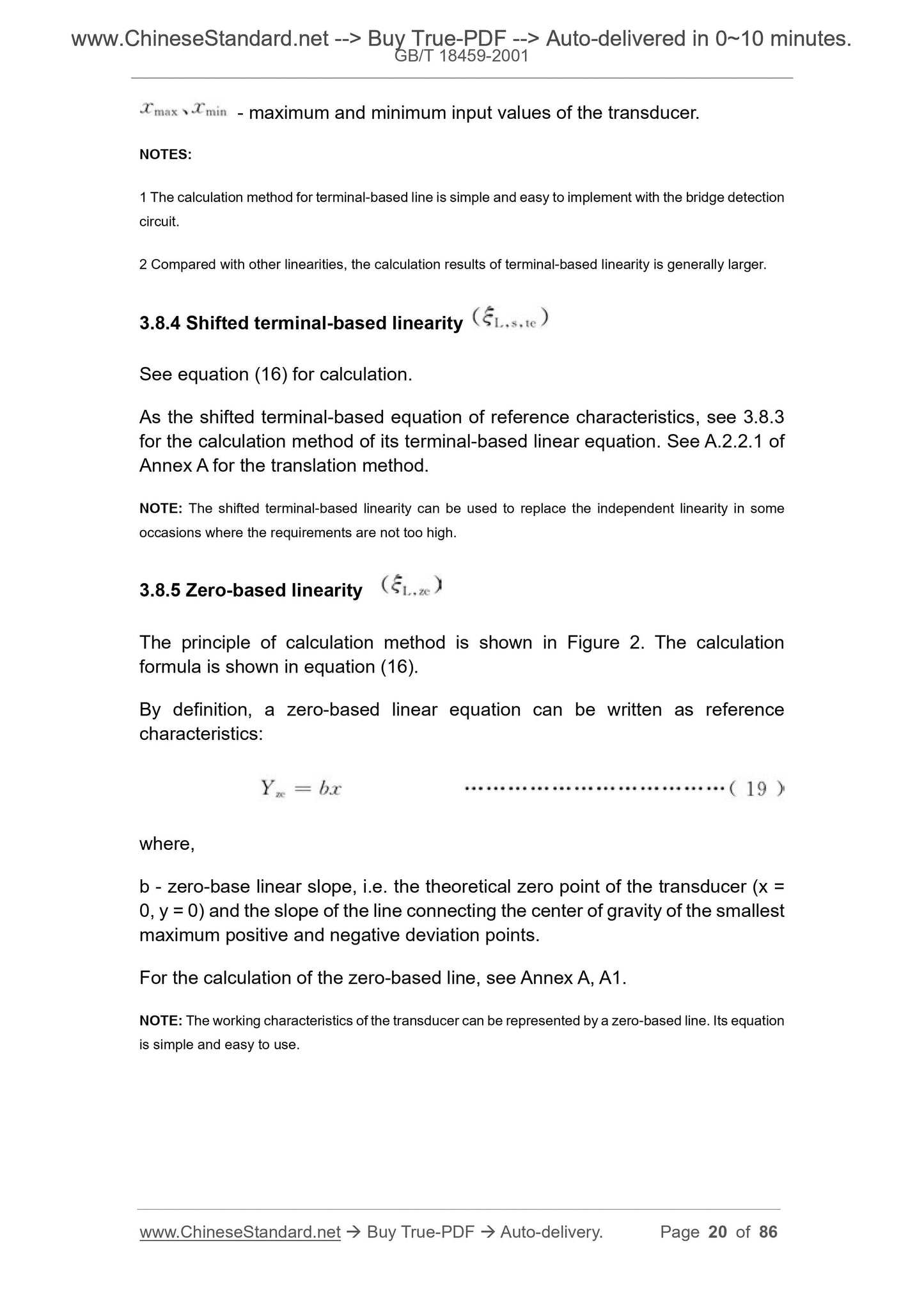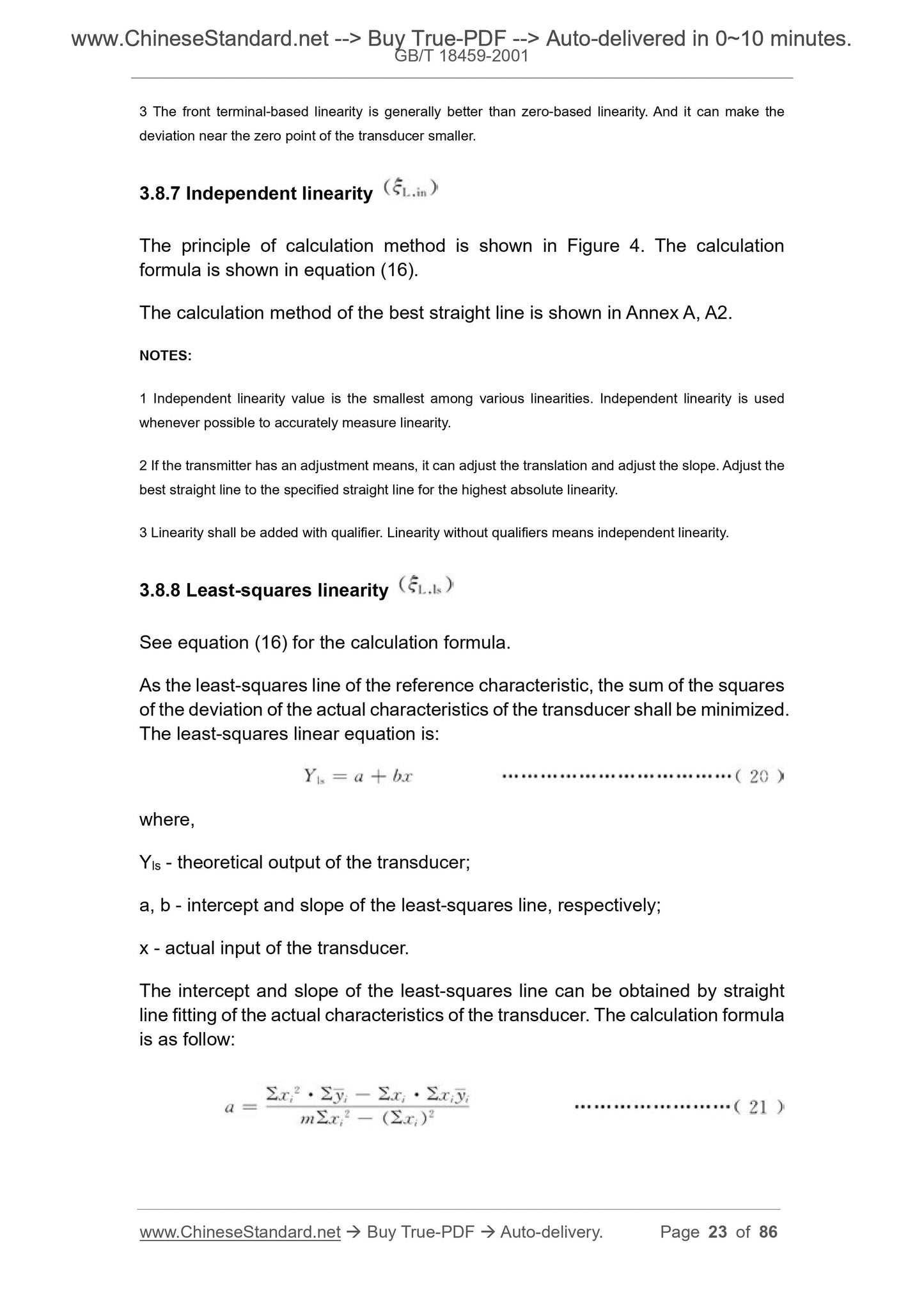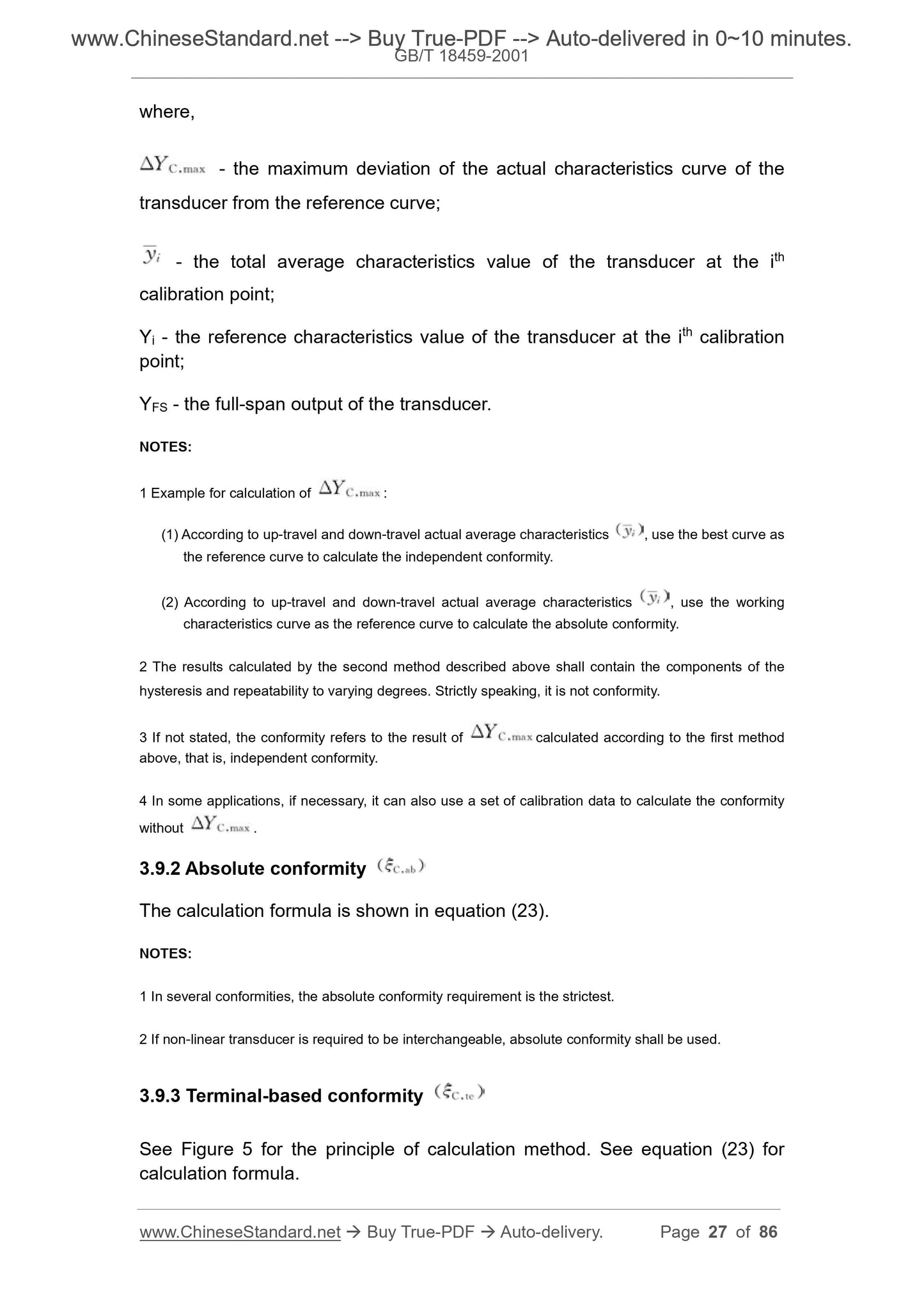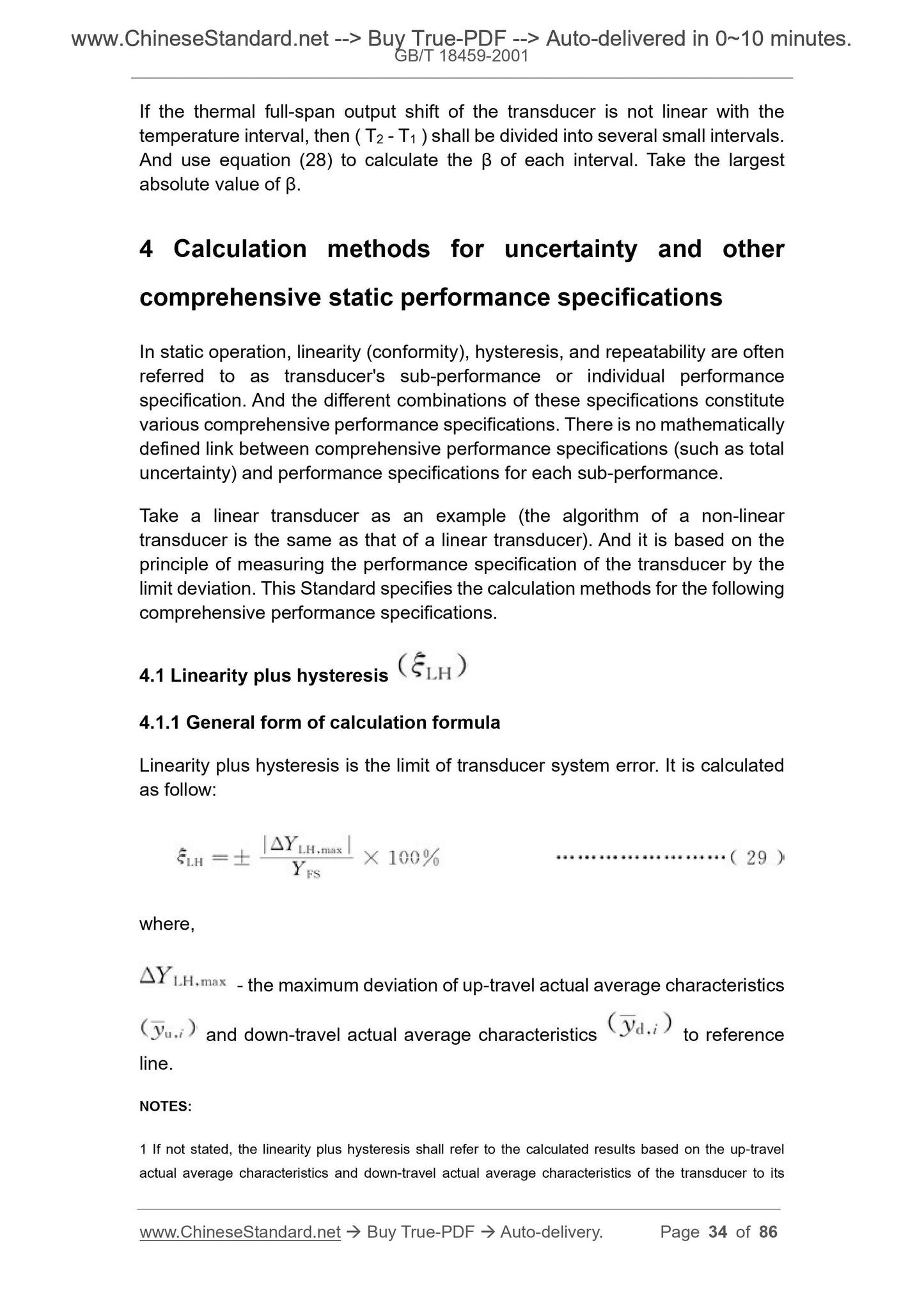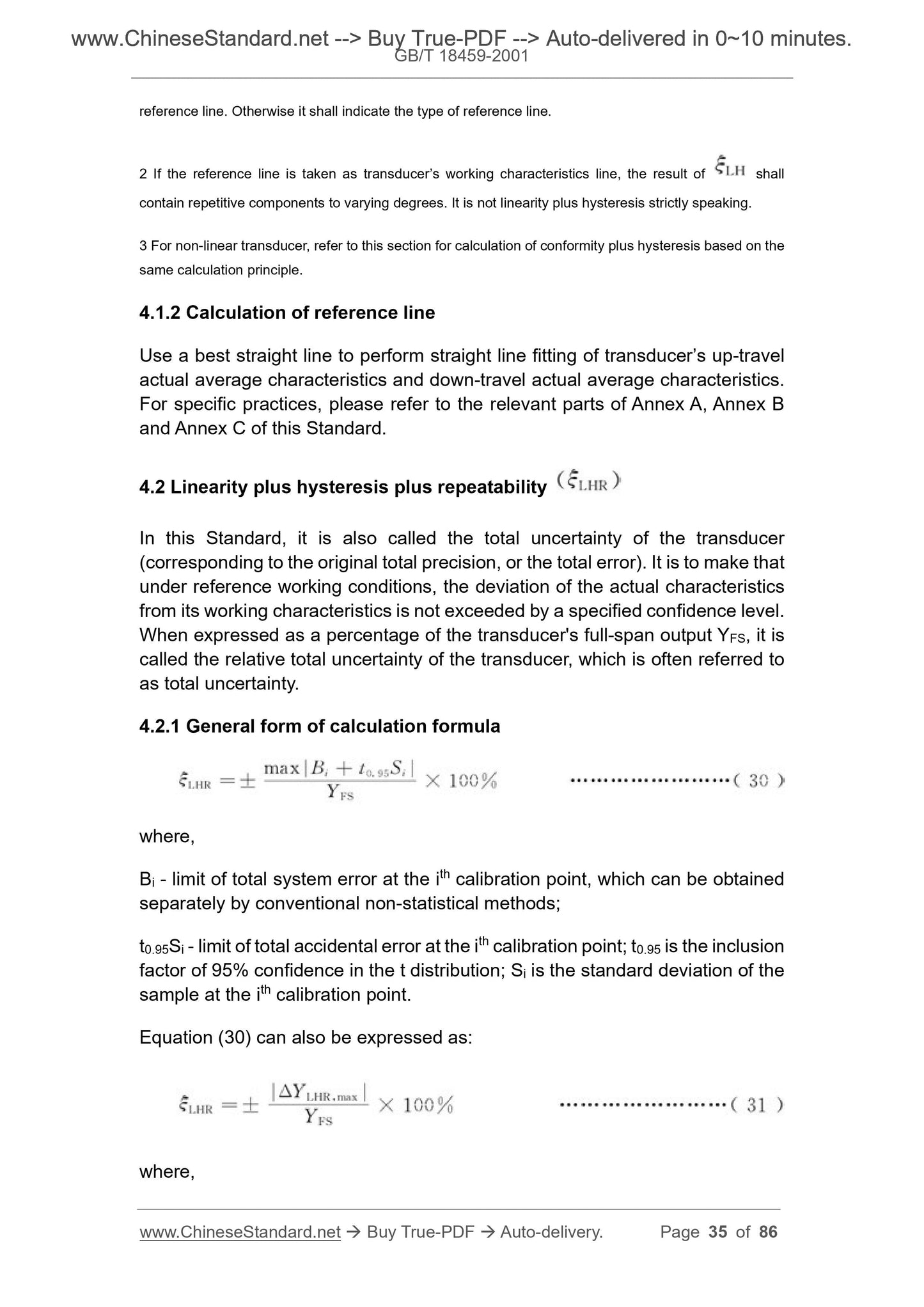1
/
of
12
www.ChineseStandard.us -- Field Test Asia Pte. Ltd.
GB/T 18459-2001 English PDF (GB/T18459-2001)
GB/T 18459-2001 English PDF (GB/T18459-2001)
Regular price
$310.00
Regular price
Sale price
$310.00
Unit price
/
per
Shipping calculated at checkout.
Couldn't load pickup availability
GB/T 18459-2001: Methods for calculating the main static performance specifications of transducers
Delivery: 9 seconds. Download (and Email) true-PDF + Invoice.Get Quotation: Click GB/T 18459-2001 (Self-service in 1-minute)
Newer / historical versions: GB/T 18459-2001
Preview True-PDF
Scope
This Standard specifies the definitions and calculation methods of the mainstatic performance specifications of general transducers.
This Standard is applicable to the calculation of the main static performance
specifications of transducers during the process of development, production
and use. It is also applicable to the development and revision of product
standards for various transducers.
Basic Data
| Standard ID | GB/T 18459-2001 (GB/T18459-2001) |
| Description (Translated English) | Methods for calculating the main static performance specifications of transducers |
| Sector / Industry | National Standard (Recommended) |
| Classification of Chinese Standard | N05 |
| Classification of International Standard | 17.020 |
| Word Count Estimation | 46,494 |
| Date of Issue | 2001-10-08 |
| Date of Implementation | 2002-05-01 |
| Adopted Standard | IEC 60770, NEQ; IEC 61298, NEQ; SAMA PMC 20.1, NEQ |
| Issuing agency(ies) | General Administration of Quality Supervision, Inspection and Quarantine of the People Republic of China |
| Summary | This standard specifies the general sensor is mainly static performance indicator definitions and calculation methods. This standard applies to the development, production, use, process sensors are static performance index calculation, but also for a variety of sensors developed or revised product standards. |
Share
